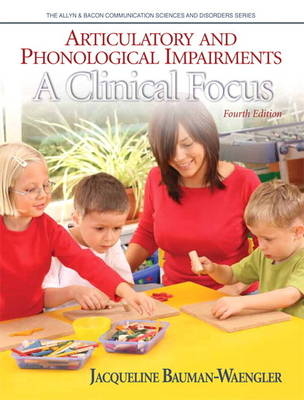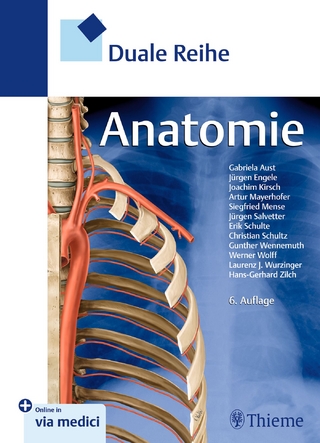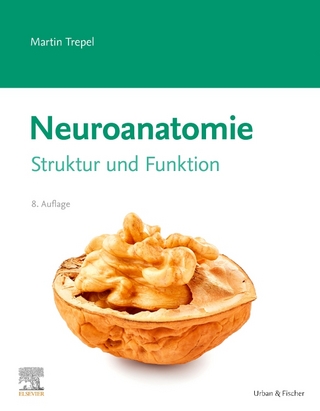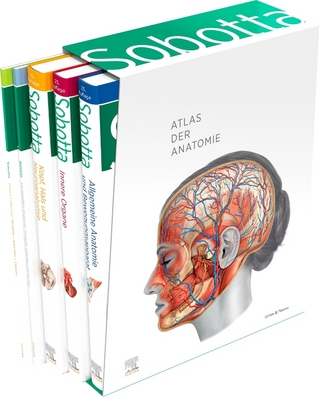
Articulatory and Phonological Impairments
Pearson (Verlag)
978-0-13-256356-7 (ISBN)
- Titel ist leider vergriffen;
keine Neuauflage - Artikel merken
Jacqueline Bauman-Waengler, Ph.D., is a Consultant, Speech/Language Specialist currently affiliated with Western Psychological Corporation in Los Angeles, California.
Contents
Preface
Glossary
Chapter 1 Clinical Framework: Basic Terms and Concepts
Communication, Speech, and Language
Subdivisions of Language
Articulation and Speech Sounds: Phonology and Phonemes
Articulation Disorders versus Phonological Disorders
Summary
Case Study
Think Critically
Test Yourself
Websites
Further Readings
Chapter 2 Phonetics — Articulatory Phonetics
Phonetics: Definitions and Classification
Vowels versus Consonants
American English Vowels
American English Consonants
Sounds in Context: Coarticulation and Assimilation
Syllable Structure
Summary
Case Study
Think Critically
Test Yourself
Websites
Further Readings
Chapter 3 Phonetic Transcription and Diacritics
Phonetic Transcription as a Notational System
Why Use Phonetic Transcription?
Diacritics
Diacritics Used with Consonants
Diacritics Used with Vowels
Diacritics for Stress, Duration, and Syllable Boundaries
Clinical Implications
Summary
Case Study
Think Critically
Test Yourself
Websites
Further Readings
Chapter 4 Normal Phonological Development
Aspects of Structural and Functional Development
Aspects of Perceptual Development
Prelinguistic Stages: Before the First Words
Vocoids
Contoids
Syllable Shapes
Babbling and Its Relationship to Later Language Development
Prosodic Feature Development
Transition from Babbling to First Words
The First Fifty Words
Segmental Form Development
Prosodic Feature Development
The Preschool Child
Segmental Form Development: Vowels
Segmental Form Development: Consonants
Phonological Processes
Prosodic Feature Development
English as a Second Language: Considerations for Phonological Development in Children
The School-Age Child
Segmental Form Development
Phonological Awareness, Emerging Literacy, and Phonological Disorders
Prosodic Feature Development
Summary
Case Study
Think Critically
Test Yourself
Websites
Further Readings
Chapter 5 Appraisal: Collection of Data
Evaluation by the Clinician
Initial Impression
Articulation Tests
Some Advantages and Disadvantages of Articulation Tests
Factors to Consider When Selecting a Measure of Articulation
Assessment Procedures to Supplement Articulation Tests
Organizing Articulation Test Results: Describing the Error
Stimulability Testing
Spontaneous Speech Sample
Organizing the Continuous Speech Sample
Evaluation of the Speech Mechanism
What to Look for When Evaluating the Speech Mechanism
Selection of Additional Assessment Measures
Hearing Screening
Language Testing
Specific Auditory Perceptual Testing
Cognitive Appraisal
Special Considerations
The Child with Emerging Phonology
The Unintelligible Child
Summary of the Data
Summary
Case Study
Think Critically
Test Yourself
Websites
Further Readings
Appendix 6.1: Speech-Motor Assessment Screening Form
Chapter 6 Dialects and English as a Second Language
Dialects
Regional Dialects
Ethnicity
African American Vernacular English
The Speaker of English as a Second Language
Spanish American English
Vietnamese American English
Cantonese American English
Hmong American English
Korean American English
Arabic American English
Implications for Appraisal
Summary
Case Study
Think Critically
Test Yourself
Websites
Further Readings
Chapter 7 Diagnosis: Articulation versus Phonological Emphasis
Preliminary Analysis: Inventory and Distribution of Speech Sounds
Using a Matrix to Examine the Inventory and Distribution of Speech Sounds
Phonemic Contrasts: Differentiating Articulation from Phonological Disorders
Decision Making: Primarily Articulatory Difficulties
Guidelines for Beginning Therapy: Phonetic Disorder
Decision Making: Primarily Phonological Difficulties
Inventory and Distribution of Speech Sounds
Syllable Shapes and Constraints
Phonological Contrasts
Phonological Error Patterns
Measures of Intelligibility and Severity
Measures of Intelligibility
Measures of Severity
Summary
Case Study
Think Critically
Test Yourself
Websites
Further Readings
Appendix 8.1: Single-Word Responses to Goldman-Fristoe Test of Articulation for Child H. H.
Appendix 8.2: Preliminary Matrix for Recording Utterances
Appendix 8.3: Matrix for Recording Phones According to Pre-, Inter-, and Postvocalic Word Positions for Child H. H.
Appendix 8.4: Overall Inventory of Phones for Child H. H.
Appendix 8.5: Proportional Occurrence of Consonant Phonemes in First-Grade, Third-Grade, and Fifth-Grade Children’s Speech
Chapter 8 Therapy for Articulation Errors
Decision Making: When to Use a Phonetic Approach
Articulation Errors
Decision Making: A Phonetic Approach with Phonological Disorders ?
Therapy Sequence
General Overview of Therapy Progression
Individual Sound Errors
Misarticulations of [s] and [z]
Phonetic Description
Linguistic Function
Initial Remarks
Types of Misarticulation
Therapeutic Suggestions
Coarticulatory Conditions
Misarticulations of [ʃ] and [ʒ]
Phonetic Description
Linguistic Function
Initial Remarks
Types of Misarticulation
Therapeutic Suggestions
Coarticulatory Conditions
Misarticulations of [k] and [g]
Phonetic Description
Linguistic Function
Initial Remarks
Types of Misarticulation
Therapeutic Suggestions
Coarticulatory Conditions
Misarticulations of [l]
Phonetic Description
Linguistic Function
Initial Remarks
Types of Misarticulation
Therapeutic Suggestions
Coarticulatory Conditions
Misarticulations of [r] and the Central Vowels with R-Coloring
Phonetic Description
Linguistic Function
Initial Remarks
Types of Misarticulation
Therapeutic Suggestions
Coarticulatory Conditions
Misarticulations of [θ] and [ð]
Phonetic Description
Linguistic Function
Types of Misarticulation
Therapeutic Suggestions
Coarticulatory Conditions
Misarticulations of [f] and [v]
Phonetic Description
Types of Misarticulation
Therapeutic Suggestions
Coarticulatory Conditions
Affricate Problems
Phonetic Description
Types of Misarticulation
Therapeutic Suggestions
Coarticulatory Conditions
Voicing Problems
Therapeutic Suggestions
Consonant Cluster Problems
Therapeutic Suggestions
Coarticulatory Conditions
Summary
Case Study
Think Critically
Test Yourself
Websites
Further Readings
Chapter 9 Treatment of Phonemic Errors
Treatment Principles
Minimal Pair Contrast Therapy
Minimal Opposition Contrast Therapy
Maximal Oppositions Approach
Evolution of Maximal Oppositions: The Complexity Approach
Multiple Oppositions Approach
Phonological Process Therapy
Cycles Training
Metaphon Therapy: A Phonological Awareness Approach
Phonological Disorders with Concurrent Language Problems: Therapeutic Suggestions
Connecting Phonology to Morphosyntax: Morphosyntax Intervention
Connecting Phonology to Semantics: Vocabulary Intervention
The Child with an Emerging Phonological System: Therapeutic Suggestions
Combining Phonology with Semantics: Developing a Lexicon
Treatment of Multiple Vowel Errors
The Child with a Very Limited Vowel Inventory: Therapeutic Suggestions
The Child with a High Proportion of Vowel Substitutions: Therapeutic Suggestions
Summary
Case Study
Think Critically
Test Yourself
Websites
Further Readings
Chapter 10 Theoretical Considerations and Practical Applications
Phonology
What Is Phonology?
How Does Phonology Work?
How Did the Concept of the Phoneme Develop?
Speech Sound versus Phoneme: Clinical Application
Distinctive Feature Theories
What Are Distinctive Features?
How Do Distinctive Features Work?
How Did Distinctive Feature Theories Develop?
Distinctive Feature Theories: Clinical Application
Generative Phonology
What Is Generative Phonology?
How Does Generative Phonology Work?
How Did Generative Phonology Develop?
Distinctive Features and Generative Phonology: Clinical Application
Natural Phonology
What Is Natural Phonology?
How Does Natural Phonology Work?
Phonological Processes
How Did Natural Phonology Develop?
Natural Phonology: Clinical Application
Linear versus Nonlinear Phonologies
What Are Linear and Nonlinear Phonologies?
How Do Nonlinear Phonologies Work?
How Did Nonlinear Phonology Develop?
Nonlinear Phonologies: Clinical Implications
Summary
Case Study
Think Critically
Test Yourself
Websites
Further Readings
Appendix 4.1
Chapter 11 Articulatory/Phonological Disorders in Selected Populations
Childhood Apraxia of Speech: A Disorder of Speech Motor Control
Definition and General Features
Articulatory/Phonological Characteristics
Clinical Implications: Diagnostics
Clinical Implications: Therapeutics
Motor Speech Disorders: Cerebral Palsy
Definition and General Features
Articulatory/Phonological Characteristics
Clinical Implications: Diagnostics
Clinical Implications: Therapeutics
Clefting: Cleft Palate and Cleft Lip
Definition and General Features
Articulatory/Phonological Characteristics
Clinical Implications: Diagnostics
Clinical Implications: Therapeutics
Mental Disability
Definition and General Features
Articulatory/Phonological Characteristics
Clinical Implications: Diagnostics
Clinical Implications: Therapeutics
Hearing Impairment
Definition and General Features
Articulatory/Phonological Characteristics
Clinical Implications: Diagnostics
Clinical Implications: Therapeutics
Motor Speech Disorders: Acquired Apraxia of Speech
Definition and General Features
Articulatory/Phonological Characteristics
Clinical Implications: Diagnostics
Clinical Implications: Therapeutics
Motor Speech Disorders: The Dysarthrias
Definition and General Features
Articulatory/Phonological Characteristics
Clinical Implications: Diagnostics
Clinical Implications: Therapeutics
Summary
Case Study
Think Critically
Test Yourself
Websites
Further Readings
References
Author Index
Subject Index
| Erscheint lt. Verlag | 31.3.2011 |
|---|---|
| Sprache | englisch |
| Maße | 187 x 232 mm |
| Gewicht | 930 g |
| Themenwelt | Medizin / Pharmazie ► Gesundheitsfachberufe ► Logopädie |
| Studium ► 1. Studienabschnitt (Vorklinik) ► Anatomie / Neuroanatomie | |
| ISBN-10 | 0-13-256356-8 / 0132563568 |
| ISBN-13 | 978-0-13-256356-7 / 9780132563567 |
| Zustand | Neuware |
| Informationen gemäß Produktsicherheitsverordnung (GPSR) | |
| Haben Sie eine Frage zum Produkt? |
aus dem Bereich


